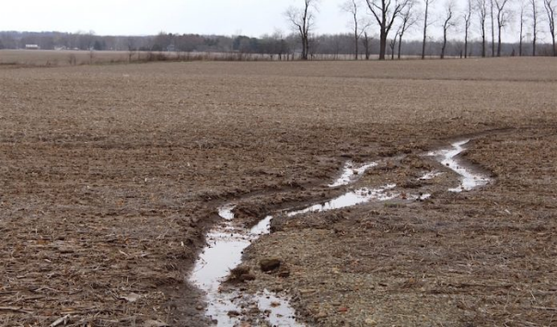What Is A Watershed Management Plan (WMP) And Why Is It Needed?
We all know that soil health and water quality are very important natural resource concerns and that all land uses have an effect on water quality. Where there is good vegetation and little disturbance from humans, most rainfall will soak into the soil rather than running off the ground. This allows stream flows to remain fairly steady and constant. In addition, the soil improves water quality while allowing the water to pass through. Soil filters out particles and removes position ions, and the soil bacteria and fungi transforms and decomposes organic pollutants from the passing water.
In a perfect world, soil would always remain undisturbed and vegetated. However, humans need agriculture, industry, manufacturing, stores, courthouses, schools, dwellings….. well you get the picture. We often need to disturb the land or change its natural state. This poses a threat to water quality. As impervious surfaces increase, stormwater runs off instead of infiltrating into the soil. As farmers work the soil to prepare a seed bed, spring rains erode the soil adding not just chemical pollutants, but sediment pollution to the water.
There are Best Management Practices (BMPs) that can help improve soil health and water quality. For instance, stores can use pervious pavement in their parking lots to allow rain to infiltrate the soil rather than off into a stream. A farm field such as the one pictures below with water causing erosion could benefit from a grassed waterway. This would lessen the nutrient and sediment pollutant loads to our creeks and streams. But BMPs are an added expense to a budget and are often substantial.
In a perfect world, soil would always remain undisturbed and vegetated. However, humans need agriculture, industry, manufacturing, stores, courthouses, schools, dwellings….. well you get the picture. We often need to disturb the land or change its natural state. This poses a threat to water quality. As impervious surfaces increase, stormwater runs off instead of infiltrating into the soil. As farmers work the soil to prepare a seed bed, spring rains erode the soil adding not just chemical pollutants, but sediment pollution to the water.
There are Best Management Practices (BMPs) that can help improve soil health and water quality. For instance, stores can use pervious pavement in their parking lots to allow rain to infiltrate the soil rather than off into a stream. A farm field such as the one pictures below with water causing erosion could benefit from a grassed waterway. This would lessen the nutrient and sediment pollutant loads to our creeks and streams. But BMPs are an added expense to a budget and are often substantial.
Indiana Department of Environmental Management (IDEM) has funding from the Clean Water Act that can help implement BMPs. Local Soil and Water Conservation Districts can request some of the funding through a grant proposal. This would return tax dollars to the county in a way that addresses our water quality. But who would determine where the money goes?
This is where the need for a Watershed Management Plan (WMP) comes in. A WMP is needed by IDEM prior to requesting any funding.
Although an entire county may need addressed, IDEM works on a watershed level. This is because the WMP identifies targeted areas where funding can make the best impact or “more bang for the buck” if you will. Because working with water quality is complex and there is substantial costs to address it, prioritizing restoration and protection is key. The WMP identifies water quality problems and proposes solutions with a strategy for putting the solutions into action. Thus, a WMP is an efficient way to address concerns when resources are limited.
What Watershed Am I In?
Do you need help figuring out what watershed you are or need to know what your Hydrologic Unit Code (HUC) is? The IDEM HUC finder can help. Click on this link and search your address.



